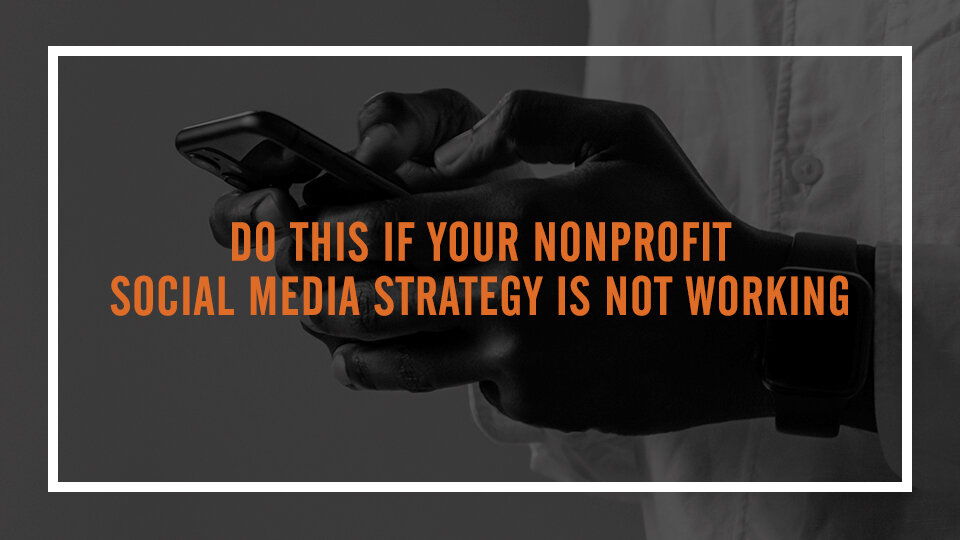Do this if Your Nonprofit Social Media Strategy Is Not Working
By Maurilio Amorim
I can almost guarantee your nonprofit social media strategy is not working. You want to reach people with that viral post or video, but nothing happens no matter how hard you try. Don’t fret. You are not alone. Let me help you.
Most social media strategies are not real strategies. Frankly, most organizations, nonprofits and churches being no exception, have a series of tactics they deploy in the name of a strategy. Writing copy, taking pictures and videos and posting to stories are all great tactics, but their sum does not constitute a strategy.
So, what is a strategy?
A strategy is a tool that is customized for a specific audience with a specific goal in mind.
One of the biggest issues with social media is that we tend to look at “social media” as being one thing. It is not. Social media are multiple platforms that reach different audiences in very specific mediums.
YouTube, Facebook, Tik Tok, Instagram, Clubhouse and Twitter, to name a few, are so different in audience makeup, content and format. Trying to leverage all of them is difficult even for large brands with big teams.
The reason that your social media strategy is faltering is most likely due to the same reason your website is not working either: it’s trying to reach multiple audiences with the same message on different platforms.
I know why that happens. You have a small team or no team, and there’s only so much time you can spend on it. After all, if you are like most of your peers, you have way more responsibilities than time allows.
So, how can you create a social media strategy that works?
Define Your Audiences
Before you write your next post of film your next video, take time to identify your audiences. Most nonprofits have more than one audience. Nonprofits often have donors, volunteers, people you serve and sometimes community and government agencies.
Trying to speak to everyone some of the time will cause you to speak to no one all of the time.
If you are a one-person show, then look for your primary audience. Ask yourself, “Based on the goals for this campaign or push, what audience do I need to reach most?”
Define Your Platform
Once you have clarity on your target audience, think through the best way to reach them online.
Baby Boomers are all over Facebook, Millennials like hanging out on Instagram and Tik Tok is a great place to reach GenZ.
Define Your Creative and Messaging
Creative is more than a picture or video. It is your title, your promise, your video or image.
Let’s say you are trying to signup teenagers for tutoring lessons. While you might be tempted to post a dancing video on Tik Tok, start working through this formula:
- What’s my goal? Get signups for the tutoring program.
- Who is my audience? Teenagers for our service, but their mothers are the decision-makers.
- Which platform(s) mothers are most likely to be on? Facebook and Instagram.
- What do mothers want for their kids? Get them to succeed in school and life.
- What should my content focus on? You want the best for your kids. We are here to help.
- What type of creative should I use? Happy teens, mom, teen laughing, teen graduating, teen hugging mom (what mom doesn’t want a hug from their child?)
Create Your Offer
Not every post should have an offer for a service or an ask. However, often you need to give people an appropriate next step.
And at this point, most people get it wrong again. Your appropriate next step is often NOT to buy, donate or volunteer. Your next step should be an easy “yes” so you can walk them through their next “yes.” This process is called your customer journey, and if you do it well, you can make significant gains for your organization.
So, taking the example above of the tutoring school, a potential next step could be: Take a quick quiz and find out if your child is a good fit for our program.
Pro tip: Notice I didn’t say, “Find out if we are a good fit for your child.” Instead, I flipped that around and created a scarcity void in the mind of my audience. Your child might not be a good fit for us. “What do you mean my child is not a good fit for you? Of course she is!”
If you go through this exercise before your next social media campaign, I guarantee you’ll get better results. It might surprise you how well.
But what if I need to reach multiple audiences? Well, do the same exercise for each audience and create audience-specific mini-campaigns.
If you are running ads or paid posts and want to know how much you should spend on marketing, read this post.














